Search results for “upper rio grande”
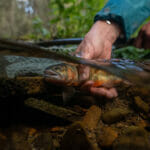
From its headwaters in the high peaks of Colorado through the northernmost rift valley of New Mexico, a region known as Rio Arriba, the Upper Rio Grande is a fabulous fishing stream. For 200 miles, the river is filled with trout, pike, smallmouth bass, and carp. Major tributary streams like the Conejos, Chama, Red, Jemez and Pecos are superb fisheries themselves, along with hundreds of additional feeders, many…
We are kicking off a monthly series focusing on our work in the Upper Rio Grande basin. This post educates readers to the work that has been done, work that will be done and introduces us to partners and staff who are dedicated to making this initiative successful across TU’s Protect, Reconnect, Restore and Sustain…
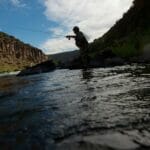
Restoration work on the Upper Rio Grande that starts in southwest Colorado and flows on into New Mexico and beyond has been a focus of TU’s for multiple years.
The Upper Rio Grande Initiative aspires to leverage our ongoing and future efforts towards basin scale resilience. This vision not only entails the protection and enhancement of the Rio’s natural ecosystems, but its profoundly adaptive human resources as well. The Initiative acknowledges the interconnectedness of the basin’s ecosystems, its economy and culture. Thus, the ecological outcomes we achieve will not be at the expense of the cultural and economic resilience of our partner communities, but exactly because of it. Protect Protecting functioning streams and habitat–as in our efforts to secure Outstanding Natural Resource designations for several New Mexico streams–will be a top priority. Protecting the Pecos River basin from…
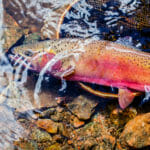
by Mark Konishi Growing up in the San Luis Valley, I would hear rumors of cutthroat trout with vivid colors caught in secret waters. Cutthroat trout with orange slab-sides as brilliant as any goldfish. Many of these stories often came from my classmate Jim, relayed down through his extended family. It was difficult to pinpoint…
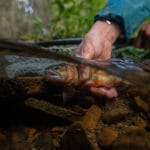
Big conservation wins at the end of 2024 will benefit native trout in the Upper Rio Grande watershed of New Mexico and Colorado.
The Gila/Rio Grande Chapter of Trout Unlimited was founded to expand conservation and habitat restoration efforts and to promote education and awareness of coldwater fisheries and the native Gila trout and Rio Grande Cutthroat trout of Southern New Mexico.
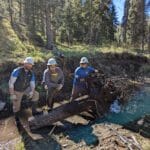
How TU’s team in New Mexico is restoring the state’s most enchanting waters and lands in 2025
What a thrilling prospect to catch native fish in a spectacular wilderness setting like in the picture above. That is what anglers’ dreams are made of. Years of hard work, planning and enduring partnerships strove towards this goal, but it’s still not quite a realized dream. In 2005, Fred Bunch, chief of resource management at Great Sand Dunes National Park and Preserve, hatched a plan…

For two decades Trout Unlimited has worked to protect and restore one of the most unique trout sub-species in North America — the Rio Grande cutthroat — by engaging numerous partners in protecting, reconnecting and restoring coldwater habitats in the Rio Grande basin.

TU’s Winter Flow Program was established on the Conejos River in 2014, and since has grown to include five reservoirs and a diversity of water partners.

TU makes it easy to be thankful

Contact: Nick Gann, Rocky Mountain Communications Director, nick.gann@tu.org Trout Unlimited is proud to honor Louis Bacon and Trinchera Ranch as the recipients of the 2025 Western Division American Fisheries Society (WDAFS) Conservation Achievement Award. This prestigious honor is awarded annually to an organization that has made significant, lasting contributions to fisheries conservation across 13 Western U.S. states. Located…
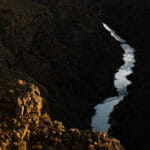
As you head north out of Santa Fe on US-285 there is a prominent overpass spanning the highway. Stamped deep in its massive upper concrete support beam, in big, bold letters that cover the entire length of the four lane interchange, are the words, “Tierra Sagrada,” – “Sacred Land.” The notion of honoring our land…
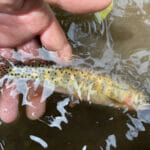
Rio Grande cutthroat trout (Oncorhynchus clarkii virginalis) Species status and summary: Rio Grande cutthroat trout (RGCT) were first discovered in 1541 by Francisco Coronado’s expedition in the upper Pecos River, although they were not formally described until 1856. They represent the southern extent of the cutthroat trout species, historically ranging from the mountainous headwaters of…
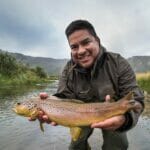
You may think of the Land of Enchantment as a desert state – parched, bone-dry country where a fish has to take Uber to find place to swim. Not so, my friends, not so.












